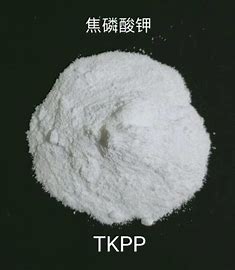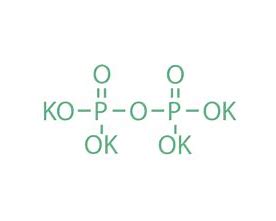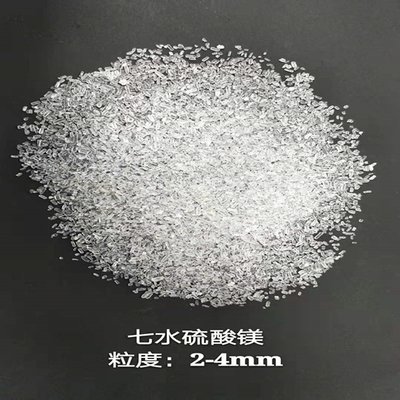Nitric Acid/7697-37-2/HNO3
I. Physical Properties of Nitric Acid
Nitric acid has distinct physical characteristics in different states. Pure nitric acid is a colorless and transparent liquid. Concentrated nitric acid appears yellowish due to the dissolution of nitrogen dioxide. Under normal circumstances, it is a colorless and transparent liquid with a suffocating and pungent odor. The nitric acid content in concentrated nitric acid is approximately 68%. This concentration makes it volatile. The nitric acid vapor (generally nitrogen dioxide decomposed from concentrated nitric acid) in the air combines with water vapor to form a white mist, which is the same as the phenomenon of concentrated hydrochloric acid. Nitric acid can be miscible with water and can form an azeotrope with water.
In terms of specific physical parameters, the relative density of anhydrous nitric acid (compared with water = 1) is 1.50, the melting point is -42°C, and the boiling point is 83°C. Its relative vapor density (compared with air = 1) is between 2 and 3. The saturated vapor pressure at 20°C is 6.4 kPa, and the critical pressure is 6.89 MPa. The octanol/water partition coefficient is 0.21. In terms of solubility, nitric acid is miscible with water and can dissolve in diethyl ether. At 20°C, the viscosity of nitric acid is 0.89 mPa·s. Meanwhile, the specific heat capacity of nitric acid varies with different concentrations. The specific heat capacity of 98.15% nitric acid is 1.99 kJ/(kg·K), that of 90.33% nitric acid is 2.22 kJ/(kg·K), that of 70.00% nitric acid is 2.56 kJ/(kg·K), and that of 40.00% nitric acid is 2.80 kJ/(kg·K). Moreover, the electrical conductivity of nitric acid varies significantly with different concentrations. The electrical conductivity of 30.42% nitric acid is as high as 7008 S/m, while that of 98.50% nitric acid is only 167.8 S/m.
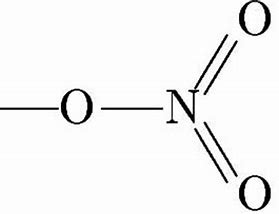
II. Chemical Properties of Nitric Acid
(I) Instability
The chemical properties of concentrated nitric acid are not stable. When exposed to light or heat, it will undergo a decomposition reaction, releasing nitrogen dioxide. The decomposed nitrogen dioxide dissolves in nitric acid, causing the appearance of nitric acid to turn light yellow. In contrast, dilute nitric acid is relatively stable. 70% – 90% nitric acid will not decompose at 0°C in the dark.
(II) Strong Acidity
In an aqueous solution, nitric acid can completely ionize, generating a large number of hydrogen ions. As the hydrate of nitrogen in the highest valence state (+5), nitric acid has strong acidity.
(III) Esterification Reaction
Nitric acid can undergo an esterification reaction with alcohols, following the mechanism of “acid losing a hydroxyl group and alcohol losing a hydrogen atom”, which is the same as the esterification reaction principle of carboxylic acids. This characteristic is used in the production of nitrocellulose. Through a specific chemical reaction, nitric acid reacts with cellulose to form nitrocellulose and water.
(IV) Nitration Reaction
When concentrated nitric acid or fuming nitric acid is mixed with dehydrating agents (such as concentrated sulfuric acid, phosphorus pentoxide), it can be used as a nitrating reagent to initiate the nitration reaction of some compounds. This reaction belongs to an electrophilic substitution reaction. The electrophilic reagent in it is the nitronium ion. The presence of dehydrating agents is beneficial for the generation of the nitronium ion. The nitration of benzene is a common example of the nitration reaction.
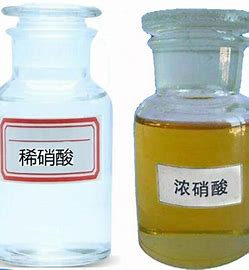
(V) Oxidizing Property
The nitrogen element in the nitric acid molecule is in the highest valence state (+5), endowing nitric acid with strong oxidizing properties. Its reduction products will change due to the different concentrations of nitric acid. Generally speaking, the higher the concentration of nitric acid, the stronger its oxidizing property. In the reaction, the average number of electrons required per molecule of nitric acid is less, and the oxidation state of the reduction product is higher. For example, concentrated nitric acid reacts to produce nitrogen dioxide, and dilute nitric acid reacts to produce nitric oxide. At the same time, nitric acid can turn wool fabrics and animal tissues light yellow.

